Dental Implants Plano, TX
The Best Solution for Lasting Tooth Replacement
If you’re looking for dental implants in Plano, Stonebriar Smile Design is here to help you restore your smile and protect your long-term oral health. Missing teeth are more than a cosmetic concern—over time, they can contribute to bone loss, shifting teeth, jaw discomfort, and an increased risk of gum disease. Dental implants provide a permanent, natural-looking solution that not only improves your smile but also supports your overall dental health.
Ready to get started? Contact us today to schedule your consultation and take the first step toward a stronger, healthier smile.
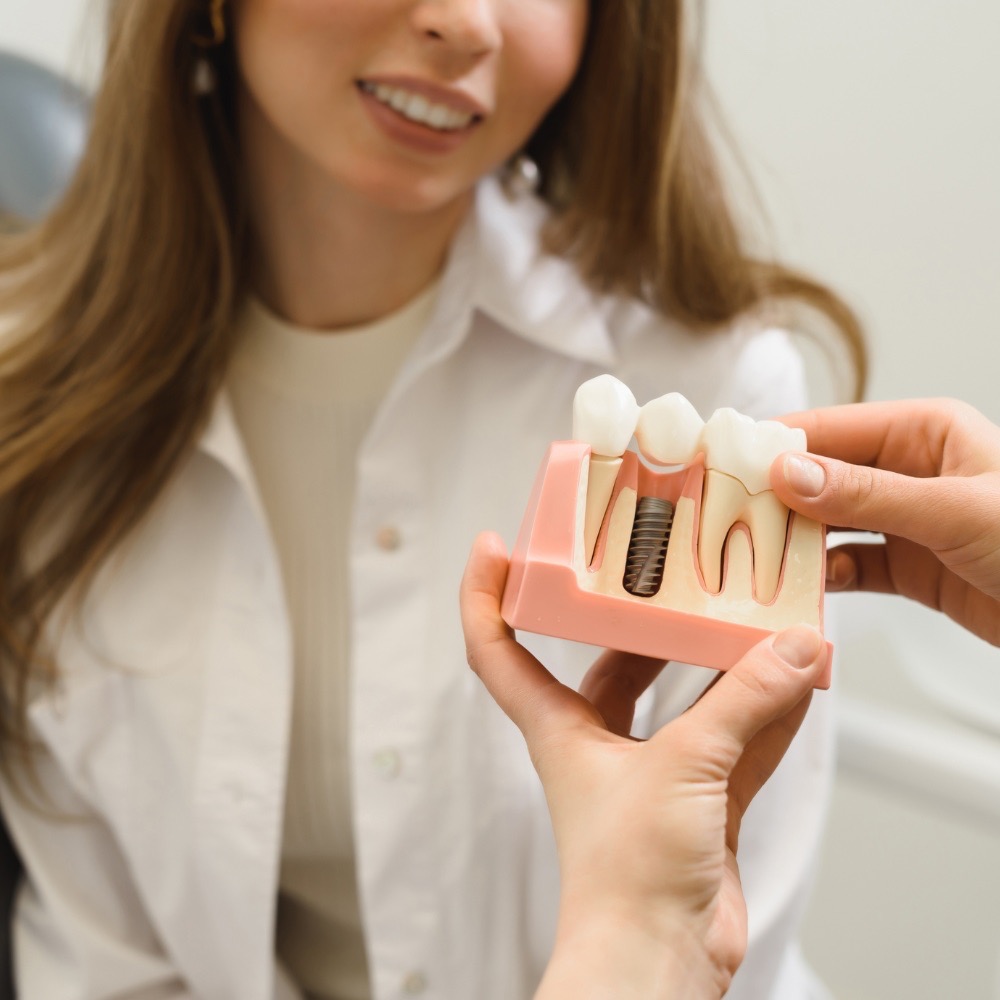
What Are Dental Implants?
A dental implant is a small titanium post that acts as an artificial tooth root. It’s placed directly into the jawbone, where it integrates with the bone to provide a stable foundation for a crown, bridge, or even full dentures. This root-like structure is what makes implants so effective—it prevents jawbone loss and provides unmatched support for your new teeth.
The Advantages of Dental Implants
For many patients, dental implants are the best long-term investment in both appearance and dental health. If you’re ready to explore your options, our Plano team is here to guide you every step of the way.
The 4-Step Dental Implant Process in Plano
Getting dental implants is a highly advanced process that delivers beautiful, natural-looking results. While it takes a little time, the outcome—a stronger bite and a lasting new smile—is well worth it. At Stonebriar Smile Design in Plano, we use the latest technology and techniques to make sure every step of your treatment is smooth and successful.
The process happens over a series of appointments with healing periods in between. Our team will guide you through each phase, making sure you know exactly what to expect. Want to learn more about what your individual timeline might look like? Schedule a consultation with one of our experienced dentists—we’re happy to answer your questions and help you move forward with confidence.

1Initial Dental Implant Consultation
Your journey starts with a personalized consultation at our Plano office. During this visit, we’ll carefully assess the health of your teeth, gums, and jaw using advanced imaging. We’ll also review your medical history and talk with you about your goals for treatment. If dental implants are the best option for your needs, we’ll create a customized treatment plan just for you. If another solution might be more suitable, we’ll explain those alternatives as well—so you’ll know exactly what to expect either way.
2Dental Implant Surgery
Once you’re ready to move forward, we’ll schedule your implant placement. This is a precise, minimally invasive procedure where small incisions are made in the gums and the titanium implant posts are placed into the jawbone.
Using detailed imaging, we’ll select the ideal placement points to ensure strength and long-term stability. Depending on how many implants you’re receiving, we may recommend local anesthesia or sedation to keep you completely comfortable during the procedure.
3Dental Implant Osseointegration/Abutment
After the implants are placed, your body needs time to heal and allow the implants to integrate with your jawbone—a process known as osseointegration. This phase typically takes several months but is key to giving your implants their lasting strength (often restoring up to 95% of your natural bite force).
Once healing is complete, we’ll bring you back in to place small connector pieces—called abutments—on top of the implants. These abutments will hold your final restorations securely in place.
4Delivery of Dental Implant Restorations
The last step is all about restoring your smile! After your abutments are in place, we’ll take impressions of your mouth to create perfectly fitted crowns, bridges, or dentures. Once your final restorations are ready, we’ll ensure everything looks and feels great, making any adjustments needed.
When your treatment is complete, you’ll leave our Plano office with a fully restored smile that looks natural, feels strong, and lets you eat, speak, and smile with confidence again.
The Surgical Procedure Explained
It’s completely normal to feel a little nervous when you hear the word “surgery.” But when it comes to dental implant surgery, there’s no need to worry. The process is far more comfortable than most people expect. We’ll thoroughly numb the area with local anesthesia, so you won’t feel any pain during the procedure. And if you’re feeling a little anxious, we can also provide oral sedation to help you relax throughout your visit.
So, what actually happens during the appointment? Let’s take a closer look at how the process works:
For most patients, dental implants are placed in two stages. The first step is surgically placing the implant posts into your jawbone. Over the next three to six months, these implants remain beneath the gum tissue, gradually fusing with the bone in a process called osseointegration.
During this healing period, you’ll typically wear temporary teeth and stick to a soft diet to allow for proper recovery. At the same time, we’ll be working on crafting your permanent restorations so they’re ready for the next stage of your treatment.
As your implants bond with your jawbone, they gradually become a permanent part of your body. This important healing phase is what gives your implants the strength and stability they need for long-term success. You won’t have to deal with unnecessary discomfort—in most cases, temporary teeth will allow you to maintain your normal routine with little disruption while your implants heal.
Once the implant has fully fused with the jawbone, the second phase of treatment begins. At this point, we’ll carefully expose the implants and place small connector pieces (called abutments) that extend just above the gumline. These abutments serve as the foundation for your final restoration—whether it’s a crown, bridge, or denture. The best part? Once your new teeth are attached, the abutments won’t be visible at all—just a beautiful, natural-looking smile.
While the thought of dental implant surgery can feel intimidating at first, the experience is far easier than many expect. With careful planning, effective anesthesia, and optional sedation, we aim to make the entire process smooth, comfortable, and stress-free. In the end, you’ll have a healthier, more confident smile you can enjoy for years to come.
What Type of Anesthesia Is Used for Dental Implants?
To help ensure a comfortable experience, it’s helpful to know what type of anesthesia is typically used during dental implant surgery.
In most cases, IV sedation is used here in our Plano office. This allows you to stay deeply relaxed and free of pain throughout the procedure. Many patients even drift off lightly and remember very little afterward.
If you’re feeling a little more anxious beforehand, we can also prescribe an oral sedative for you to take prior to your appointment. This added step can help ease nerves and set your mind at ease as you get ready for treatment.
By combining IV sedation with the option for pre-appointment medication, our goal is to make your dental implant procedure as smooth, stress-free, and comfortable as possible.

What to Expect During the Healing Period
Why Choose Dental Implants?
Losing teeth affects more than just your appearance—it can have a real impact on your confidence, daily comfort, and overall quality of life. Whether you’ve recently lost a tooth or have been living with gaps for years, dental implants offer a proven solution that restores both function and self-assurance.
Regain Confidence & Function
Backed by Science & Innovation
Long-Lasting Results
Natural Look & Feel
Protect Your Oral Health
Peace of Mind

How Will Dental Implants Benefit You?
Dental implants have become a leading solution for replacing missing teeth, with more than 500,000 people opting for them each year. It’s easy to see why—they offer lasting health, functional, and lifestyle benefits that other treatments can’t match. If you’re considering dental implants in Plano, here’s what makes them such a smart investment in your smile and overall well-being.
Everyday Advantages of Dental Implants
Health Benefits of Dental Implants
Long-Term Benefits of Dental Implants
Dental Implants History
The idea of replacing missing teeth isn’t new—far from it. Thousands of years ago, civilizations like the Egyptians and Mayans were already experimenting with ways to restore lost teeth. Archaeological findings have uncovered early attempts using materials such as carved shells, metal, and even wood to fill the gaps.
Modern dental implants took a major leap forward in the 1950s thanks to Swedish orthopedic surgeon Dr. Per-Ingvar Brånemark. While studying bone healing, he discovered that titanium could fuse naturally with bone—a process he later named “osseointegration.” This finding laid the foundation for the implant technology still used today.
After Dr. Brånemark’s discovery, titanium dental implants gradually gained traction in the medical and dental communities. By the 1980s, clinical trials and long-term studies confirmed their safety, stability, and effectiveness. As materials and surgical techniques improved, implants became more predictable and widely accessible. What was once considered a specialized procedure is now a standard option for tooth replacement around the world, with millions of successful cases and ongoing advancements in implant design.
Today, dental implants are a trusted and effective solution for replacing missing teeth—restoring not just function, but confidence. Millions of people worldwide have reclaimed their ability to eat, speak, and smile comfortably thanks to this life-changing technology.
And the field continues to move forward. Advances in materials, design, and surgical techniques are making implants more precise, more durable, and more accessible than ever—shaping the future of tooth replacement for generations to come.
Who Can Benefit from Dental Implants?
Whether you’re missing one tooth or several, dental implants can be a great solution for restoring your smile. During your first visit, we’ll evaluate your oral health and determine if implants are the right fit for you. If you’re a good candidate, we’ll design a treatment plan tailored to your needs, goals, and timeline.
Every smile is different—but with the right approach, dental implants can help many patients regain lasting function, confidence, and comfort.


Who Is a Good Candidate for Dental Implants?
Dental implants are a great option for many adults, but certain factors need to be in place for the procedure to be successful. At our Plano office, we’ll perform a thorough evaluation to make sure implants are right for you. In general, good candidates have:
Even if you’re not quite ready for implants right away, we can help you get there. Many patients need preliminary treatments like bone grafts, extractions, or periodontal care before moving forward. Once you’re ready, we’ll design a plan that fits your unique situation—whether you’re missing one tooth or several.
Missing One Tooth
If you’re missing a single tooth, a dental implant offers a lasting, natural-looking solution. A small titanium post is placed in the jawbone to act as the root, and once healed, it’s topped with a custom-made crown. The two are joined by an abutment—a connector that holds everything securely in place.
Unlike a traditional dental bridge, this approach doesn’t require reshaping the neighboring teeth. It preserves your natural enamel and provides a more durable, long-term replacement.
Missing Multiple Teeth
If you’re missing several teeth in a row, an implant-supported bridge may be an excellent solution. Unlike a traditional bridge, which relies on nearby teeth for support, this type of restoration is anchored directly to dental implants placed in the jaw. That means there’s no need to alter healthy teeth to fill the gap.
The result is a stable, long-lasting solution that looks natural and helps protect the integrity of your remaining teeth and bone structure.
Missing All Teeth
If you’ve lost all your teeth in the upper or lower arch, dental implants can still offer a stable, lifelike solution. Using just a few precisely placed implants, we can secure a full denture that restores both appearance and function. Depending on your needs, the denture may be fixed permanently in place or designed to snap on and off for easy cleaning.
For patients with significant bone loss, the All-On-4 technique may be a great option. This method uses four strategically positioned implants—angled to maximize contact with available bone—to support a full arch of teeth. It’s an efficient, effective way to regain a confident smile without the need for extensive grafting or dozens of implants.
What advanced dental implant technology is available?
Advanced Dental Implant Technology
Today’s dental implant procedures are more precise, efficient, and comfortable than ever—thanks to ongoing advancements in technology. Here are a few of the innovations we may use to support a smoother, more predictable experience:
Single-stage dental implants offer a more streamlined approach to tooth replacement. Unlike traditional implants that require a second procedure to uncover the post, these remain slightly exposed during the healing phase. After about six weeks, your restoration can typically be placed. This method reduces the number of surgical steps and follow-up visits—an efficient option for many Plano patients seeking a quicker path to a complete smile.
In some situations, an implant can be placed right after a tooth is removed. This technique can shorten your treatment timeline by combining two procedures into one. By placing the implant immediately following an extraction, we reduce the need for additional surgery and help preserve the natural shape of your jaw and gums.
With immediate loading, a dental implant and a temporary crown can often be placed during the same visit. This means you won’t have to wait months to enjoy the look and function of a complete smile. While not every case qualifies, this technique offers an efficient, same-day solution for many patients—combining convenience with immediate aesthetic results.
At our Plano office, we use advanced 3D imaging and computer-guided design tools to carefully plan your dental implant placement. These technologies allow us to visualize your bone structure in detail and determine the ideal location for each implant. The result is a more precise procedure that supports long-term success and a better overall outcome.
Using specialized software, guided implant surgery allows us to plan the exact position and angle of each implant before the procedure even begins. This level of precision helps minimize surgical time and ensures a more accurate, comfortable experience. It’s a valuable tool for improving results and reducing the margin for error—especially in complex cases.
If you’re looking for a non-metal option, zirconia implants may be the right choice. Made from a ceramic material known for its strength and compatibility with the body, zirconia offers a durable and natural-looking alternative to titanium. These implants are especially popular among patients with metal sensitivities or those prioritizing aesthetics, as they blend beautifully with surrounding teeth.
Together, these innovations in implant technology make treatment more efficient, reduce the need for multiple procedures, and lead to a smoother recovery—ultimately creating a better experience for our patients in Plano.
What’s the Difference Between Removable and Fixed Implant Prostheses?
When exploring your options for dental implants in Plano, it’s important to understand the two main types of restorations: removable and fixed prostheses. Each has its own set of advantages depending on your needs, preferences, and budget.

Removable Implant Prostheses
Also known as overdentures, these restorations attach to implants using snap-on components, such as bars or ball-and-socket connectors. You can take them out yourself for easy cleaning and maintenance. They’re a great option for patients looking for flexibility, although they may require more upkeep over time.
Fixed Implant Prostheses
Fixed options—like implant-supported bridges or hybrid dentures—are designed to stay securely in place and are only removable by your dentist. These restorations offer a more natural look and feel, along with greater stability. While they typically involve a more complex placement process and a higher upfront cost, many patients appreciate the seamless function and low-maintenance experience.
Key Differences at a Glance
Deciding between a removable or fixed implant restoration depends on your unique needs, preferences, and oral health. During your consultation at our Plano office, we’ll help you weigh the pros and cons to find the right fit for your lifestyle.
Understanding the Cost of Dental Implants in Plano
The cost of dental implants isn’t one-size-fits-all—it varies depending on your individual treatment plan. Factors like the number of missing teeth, the type of restoration, and any preparatory procedures can all influence the final price. Because implant treatment is completed in phases, you won’t need to pay for everything at once; each step is handled separately over time.
At your consultation, our team in Plano will provide a clear cost estimate and discuss payment and financing options to help make treatment more manageable. While implants may have a higher upfront cost compared to other tooth replacement options, their durability and long-term benefits often make them the more cost-effective solution in the long run.
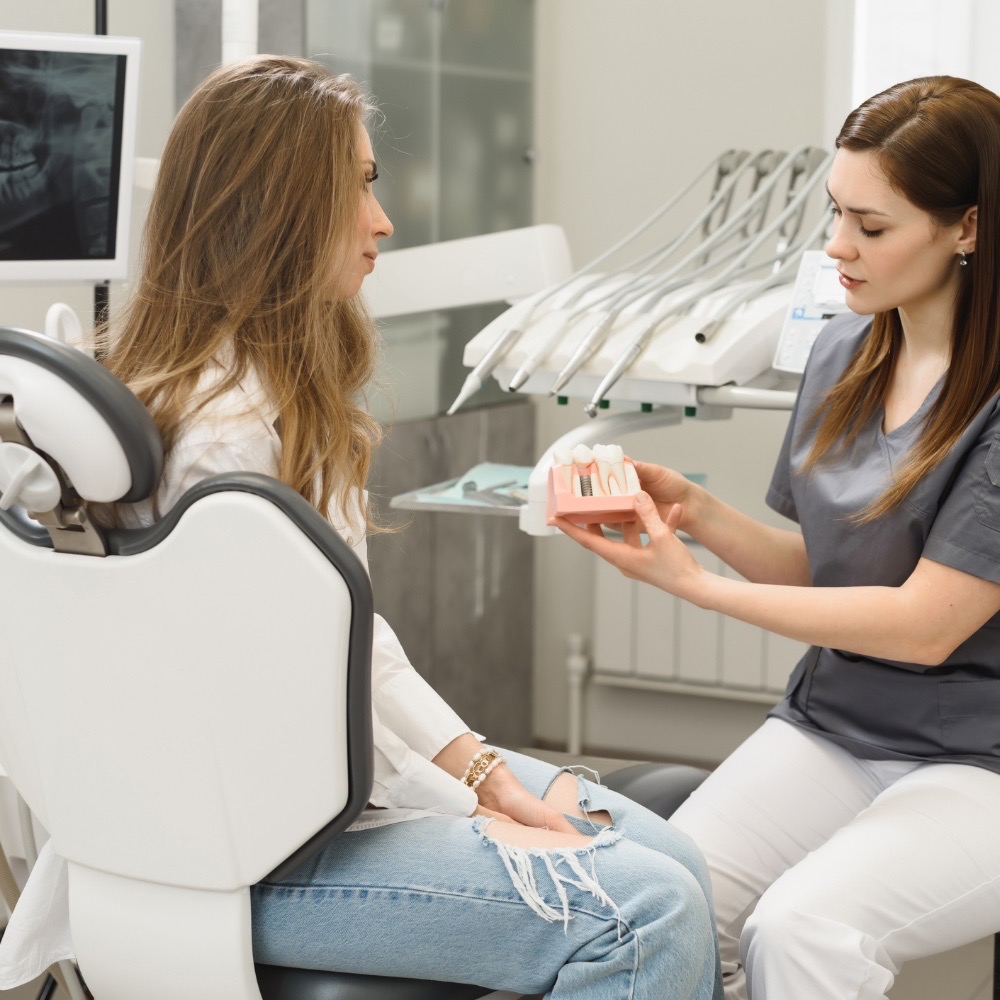
Talking through these details with your dentist will give you a better understanding of your expected costs. We’ll also help you explore flexible financing options to make your treatment as affordable and stress-free as possible.
Preliminary Treatments & Dental Implant Surgery in Plano
Before you can move forward with dental implants, some preparatory treatments may be needed to ensure the best possible outcome. Procedures like bone grafting, gum disease treatment, or tooth extractions are sometimes recommended to create a healthy foundation for your implants. If any of these are part of your treatment plan, their cost will be added to the overall total—but in many cases, they’re partially covered by dental insurance, which can help reduce your out-of-pocket expenses.
Your actual implant surgery will also have its own associated fee. The good news is that at our Plano office, we handle the entire implant process—from placement to restoration—all under one roof. This means no need to visit an outside specialist, making both the experience and the billing process simpler and more straightforward.
What Makes Up the Cost of a Dental Implant?
Several elements go into determining the total cost of your dental implant treatment. Here’s a breakdown of the key components we’ll review during your consultation at our Plano office:
How Dental Implants Can Help You Save in the Long Run
While traditional options like dentures or bridges may seem more affordable upfront, they often come with ongoing costs that add up over time. Adhesives, special cleaning products, and regular adjustments—or even full replacements every few years—can make them more expensive than they initially appear.
Dental implants, on the other hand, are built to last. With proper care, they can remain securely in place for decades without the need for extra supplies or frequent repairs. Their stability also supports better oral health, reducing your risk for future issues like gum disease or bone loss—which can lead to even more treatment down the line. In the long run, investing in dental implants can mean fewer complications, fewer expenses, and greater peace of mind.
Does Dental Insurance Cover Implants?
In many cases, dental insurance doesn’t cover the full cost of dental implants—but that doesn’t mean there’s no coverage at all. Depending on your plan, certain parts of the process—such as your initial consultation, imaging, or preparatory treatments like gum therapy—may be partially covered.
At our Plano office, we’ll review your benefits and help you get the most from your plan. Our team is experienced in working with insurance providers to reduce your out-of-pocket expenses wherever possible. If you’re unsure what your policy includes, give us a call—we’re happy to help you navigate the details.
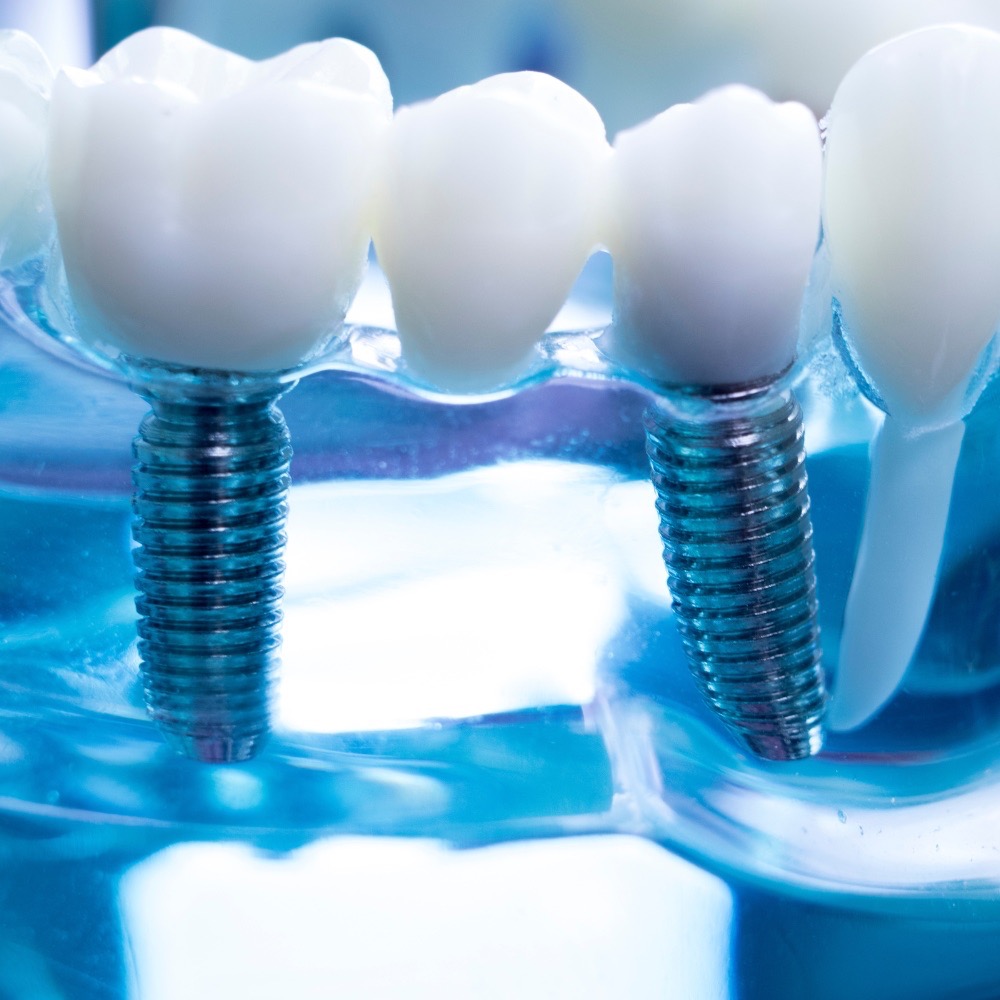
Making Dental Implants More Affordable in Plano
We believe cost shouldn’t stand in the way of restoring your smile. That’s why our Plano office proudly partners with CareCredit®, a trusted third-party financing provider. Eligible patients can take advantage of low or no-interest payment plans that allow you to spread out the cost of treatment over time—making dental implants far more manageable for your budget.
At Stonebriar Smile Design in Plano, we’re committed to helping you reach your smile goals with clarity and confidence. If you have questions about financing, insurance coverage, or the overall cost of your treatment, don’t hesitate to reach out. Our team is here to guide you every step of the way. Call today to schedule your personalized consultation.
Advanced Dental Implant Procedures in Plano
If you’ve been told your jawbone isn’t strong enough to support dental implants, you’re not out of options. At Stonebriar Smile Design in Plano, we offer advanced procedures—such as bone grafting and sinus lifts—to help rebuild and reinforce the jaw. These treatments are often necessary to create a stable foundation for implant placement, especially if bone loss has occurred due to missing teeth or other oral health issues.
Using advanced technology and proven techniques, our team can strengthen the bone over time, making it possible to move forward with implant surgery once healing is complete. If you’ve been turned away elsewhere, we may still be able to help. Contact our Plano office to schedule a consultation and learn whether one of these procedures is right for you.
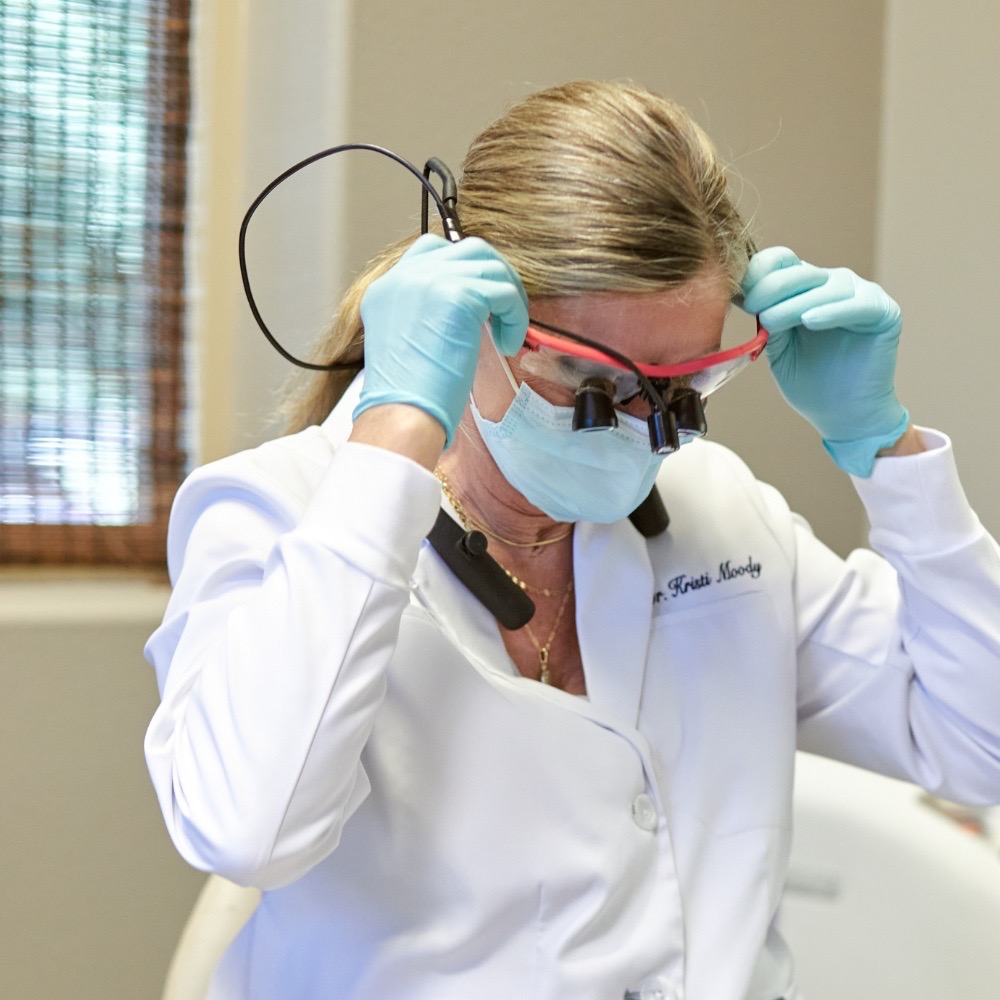
Bone Grafting in Plano
Tooth loss can lead to gradual bone deterioration, especially when left untreated. If you’ve lost bone volume in your lower jaw, a bone graft may be recommended to rebuild the area and create a solid foundation for dental implants.
During this procedure, a small incision is made in the gums, and bone graft material is placed in the area where bone loss has occurred. The graft may come from your own body, a donor source, or processed animal bone. These materials work with your body’s natural healing process to regenerate bone tissue and restore strength to the jaw.
The procedure typically takes between 45 and 90 minutes, and recovery will continue at home over several months. This healing period is essential, giving the new bone time to integrate fully before moving forward with implant placement.
Sinus Lifts
When bone loss occurs in the upper jaw—particularly near the back teeth—it can make dental implant placement more challenging. A sinus lift is a specialized procedure designed to address this issue by adding bone height to the area just below the maxillary sinuses.
If a tooth has been missing from the upper arch, the bone in that area may shrink over time, leaving too little structure to support an implant. During a sinus lift, bone graft material is placed into the space beneath the sinus cavity, encouraging new bone growth. Over the coming months, your body will regenerate bone in this area, gradually building a stronger, more supportive foundation.
Once healing is complete, we’ll plan your dental implant placement and guide you through the next step toward restoring your smile.
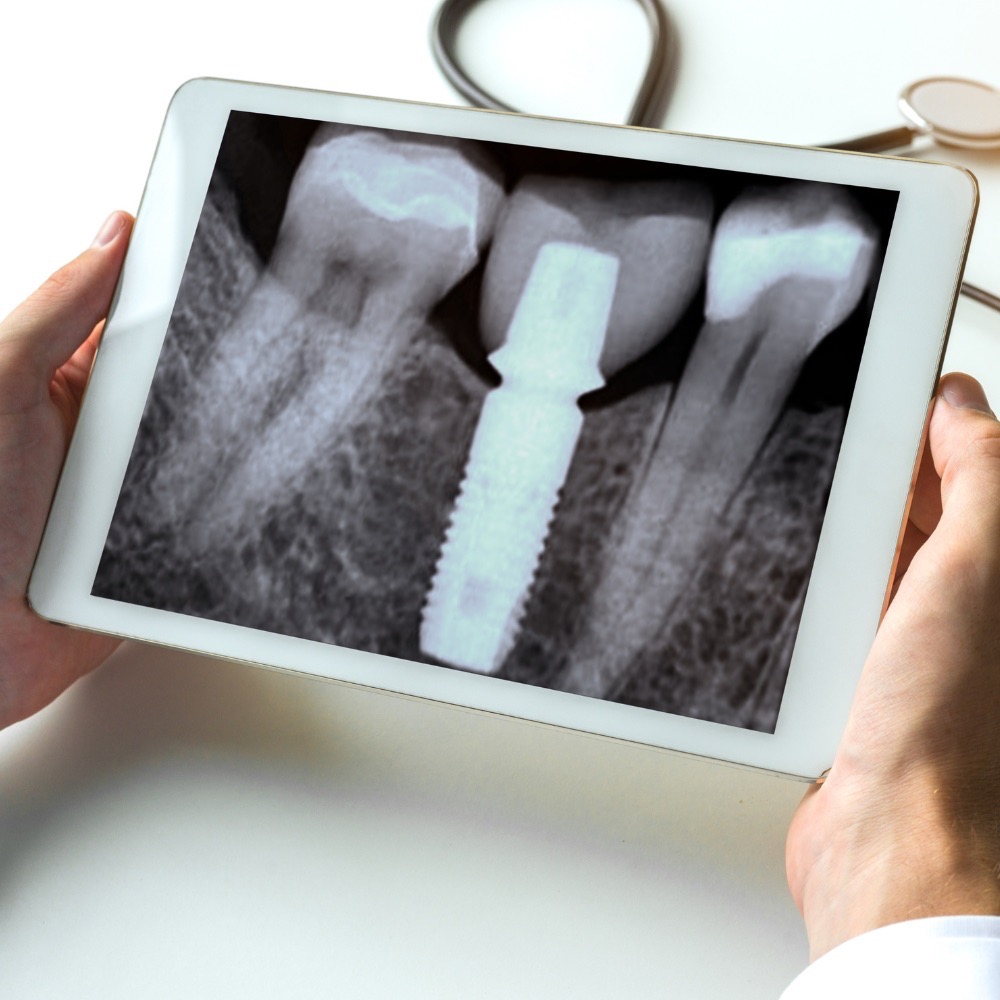
Caring for Your Dental Implants
Dental implants are built to last—but long-term success depends on how well you care for them. The good news? Keeping your implants healthy is easier than you might think. With a few simple habits and regular dental visits, you can protect your investment and enjoy a strong, beautiful smile for years to come.
Below, we’ve outlined a few practical tips to help you maintain your dental implants after placement.
Make Oral Hygiene a Daily Habit
Good oral hygiene is essential for keeping your dental implants healthy over the long term. Brush your teeth twice a day for at least two minutes, making sure to clean all surfaces thoroughly. After implant surgery, be gentle around the area for a few days to allow proper healing—your dentist will let you know when it’s safe to resume brushing the site directly.
Flossing is just as important, especially around your implant, to remove plaque and bacteria that brushing might miss. You might also consider using a nonalcoholic mouthwash to support overall gum health. If you use tobacco products, now is a great time to quit—smoking can interfere with healing and increase the risk of implant failure.
Protecting Your New Smile
After your dental implant has been fully restored, it’s important to take steps to keep it safe from damage. If you participate in sports or high-impact activities, wearing a custom mouthguard can help prevent injury to your teeth and implants. For those who grind their teeth at night (a condition known as bruxism), a nightguard is highly recommended to avoid putting excessive pressure on your restoration while you sleep.
Also, be mindful of habits that can lead to unnecessary wear or damage. Avoid chewing on pens, ice, or fingernails—and never use your teeth to open packages or bottles. Treat your implants like natural teeth, and they’ll continue to support your smile for years to come.
Don’t Skip Your Dental Checkups
Regular visits to our Plano office are key to keeping your dental implants in great shape. While your routine cleanings and exams are still essential, we may also recommend additional visits to specifically monitor your implants over time. During these appointments, we’ll evaluate your implants, surrounding gum tissue, jawbone health, and the overall condition of your smile.
These checkups give us the chance to catch any potential issues early and keep your implant-supported smile functioning beautifully for years to come. When paired with good at-home care, regular dental visits help protect your investment for the long haul.
How Is the Dental Implant Process a Collaborative Effort?
Getting dental implants involves more than one expert—it’s a coordinated effort between a skilled oral surgeon and a restorative dentist. Here’s how these professionals work together to ensure you receive a seamless, successful outcome:
Surgical Phase:
Implant Placement: The surgical phase begins with the placement of the implant post into the jawbone, typically performed by an oral and maxillofacial surgeon. Their expertise ensures the implant is placed with precision and minimal risk.
Site Preparation: If needed, the oral surgeon may also handle procedures like extractions or bone grafting to create a healthy foundation. Bone graft material may come from your own body or a donor source, depending on your case.
Restorative Phase:
Custom Restorations: After the implant heals, the restorative dentist steps in to design and place the crown, bridge, or denture. They’ll also handle any temporary restorations needed during healing.
Fit and Function: Your dentist will make fine-tuned adjustments to ensure your new teeth feel comfortable, look natural, and work properly when you chew or speak.
Ongoing Care:
Follow-Up Visits: Regular checkups with both providers allow us to monitor healing, evaluate the integration of the implant, and identify any issues early on.
Long-Term Maintenance: Your general dentist plays a key role in keeping your implant healthy through regular cleanings, exams, and personalized care advice.
Surgical Environment and Patient Safety
To reduce risk and promote successful healing, implant surgery is typically performed in a sterile, hospital-style setting. These controlled environments help protect against infection and ensure optimal outcomes.
In more complex cases—or for patients with specific health considerations—implant placement may take place in a hospital setting, especially if advanced procedures like bone grafting from other parts of the body are needed.
Summary
Dental implants aren’t a one-person job. The process involves close coordination between your oral surgeon and restorative dentist, each bringing their own expertise to your care. This team-based approach ensures your treatment is both effective and tailored to your needs—resulting in a strong, natural-looking smile that lasts.
Frequently Asked Questions About Dental Implants
Dental implants have become one of the most trusted and effective solutions for replacing missing teeth. As more patients in Plano explore this option, it’s natural to have questions about how the process works and what to expect. At Stonebriar Smile Design, we believe informed patients make confident decisions—which is why we’re here to provide clear answers to your most common questions.
Below, you’ll find responses to five frequently asked questions about dental implants. If you’d like to learn more or speak directly with one of our experienced dentists, we invite you to schedule a consultation. We’re happy to walk you through the details and help determine if implants are the right fit for your smile.
